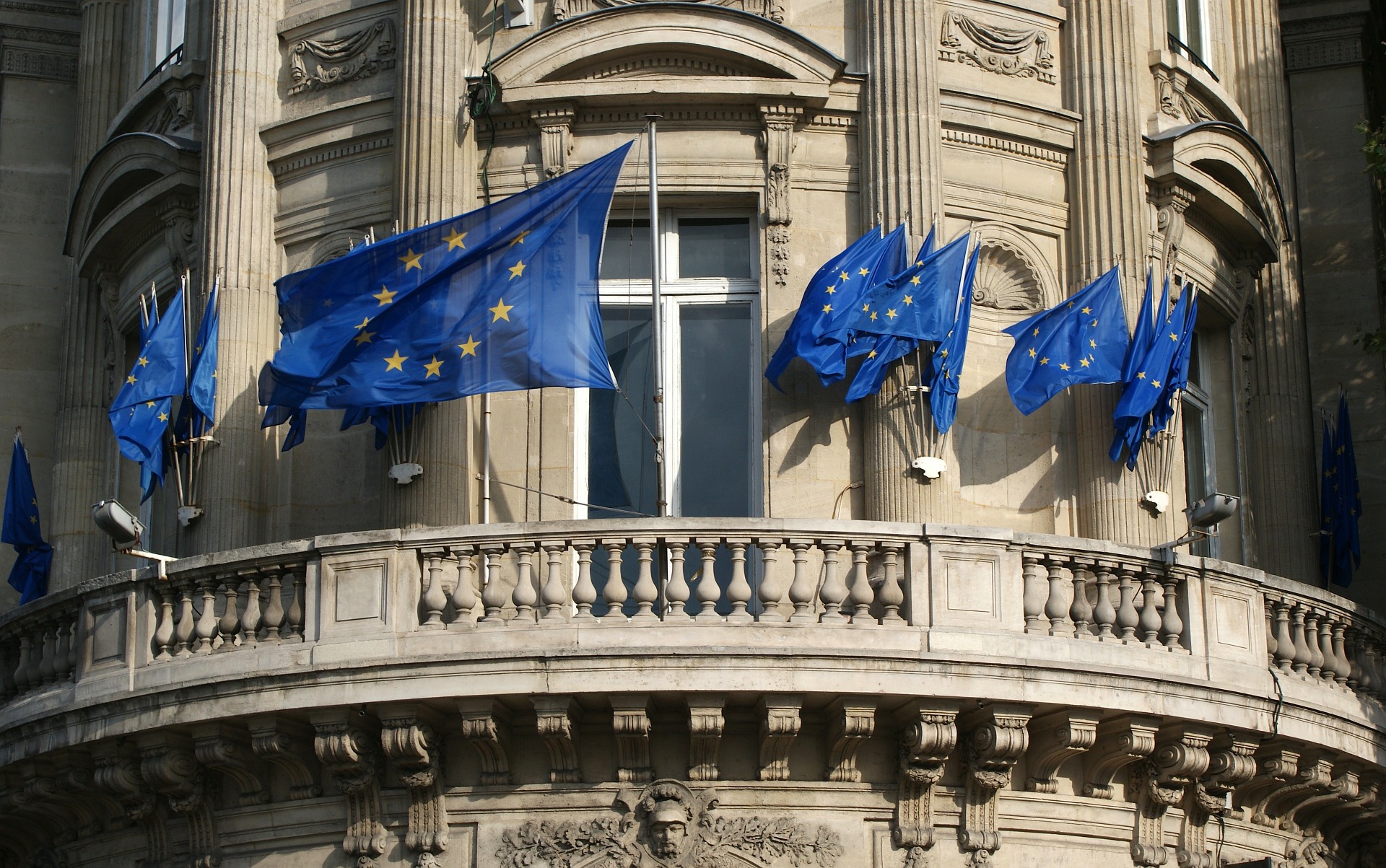City buses in jam packed urban traffic, airplanes overhead, freight trucks, and cargo ships in ocean waters – the transport sector pictures a world interconnected and in motion. Yet, it poses a significant threat to the planet’s future. The Intergovernmental Panel on Climate Change’s (IPCC) 6th Assessment Report (AR6) dedicates an entire chapter to this complex issue, revealing both the immense challenges and the vast opportunities for transformation within the transport sector.
As reported in the AR6 chapter on transportation, “meeting climate mitigation goals would require transformative changes in the transport sector”. This statement is supported by a strong set of data collected and reported in the chapter. The report points out that the transport sector accounts for around 15% of total greenhouse gas emissions (GHG) emissions at a global level. In 2019, global transport was the fourth largest source of GHG emissions, following the power, industry, and the agriculture forestry and land use (AFOLU) sectors. Transport also contributes to about 23% of global energy-related CO2 emissions, according to data from the International Energy Agency (IEA).
In detail, 70% of direct transport emissions came from road vehicles, 1% from rail, 11% from shipping, and 12% from aviation, with emissions from shipping and aviation rising quickly. Moreover, in developing regions, transportation-related emissions are increasing faster than in most developed countries, and this trend is likely to continue in the future.
In the context of the IPCC AR6 assessment on transport, scenarios are used to explore possible future emissions pathways for the sector, their drivers and how the possible and suggested policy interventions, highlighting the broader trends of how the transport sector may transform in order to be compliant with different warming levels.
In these scenarios, CO2 emissions from the transport sector are projected to increase between 16% and 50% by 2050 in a scenario where no intervention or mitigation efforts are implemented. The projections also indicate a “continued growth in demand for freight and passenger services, particularly in developing countries in Africa and Asia”, across all modes of transportation.
For scenarios aiming to limit warming to 1.5°C with minimal or no overshoot, a reduction of 59% in CO2 emissions from transportation by 2050 is deemed necessary compared to modeled levels from 2020.
The report also outlines various mitigation pathways that demonstrate how different strategies can impact future emissions and temperatures, showcasing potential transformations within the sector. Two key scenarios aimed at limiting warming to 1.5°C with minimal overshoot focus on deep renewable energy integration and electrification, or reducing demand.
In these scenarios, emission reductions of 80% and 90% in the transport sector by 2050 are projected. However, these reductions may not be uniform across regions globally. While emissions from high income countries, Eastern Europe and West Central Asian countries are expected to decrease by 2050 in scenarios aligned with a 1.5°C goal, other regions like Africa, Asia and Pacific, Latin America and the Caribbean, and the Middle East could experience increases in some scenarios.
The scenarios literature indicates that fuel and technology shifts are crucial to reducing carbon emissions to meet temperature goals. In general terms, electrification tends to play the key role in land-based transport, but biofuels and hydrogen (and derivatives) could play a role in decarbonisation of freight in some contexts. Biofuels and hydrogen (and derivatives) are likely more prominent in shipping and aviation. The shifts towards these alternative fuels must occur alongside shifts towards clean technologies in other sectors.
In the context of the AR6, there is a growing recognition, compared to previous IPCC Assessment Report (AR5), of the importance of implementing demand management strategies alongside the integration of new technologies. These strategies include fostering electromobility in land transport, as well as the emergence of advanced biofuels and hydrogen-based fuels for shipping and aviation.
Biofuel, as defined by the Organisation for Economic Co-operation and Development (OECD), is a “liquid, solid, or gaseous fuel produced by conversion of biomass such as bioethanol from sugar cane or corn, charcoal or wood chips, and biogas from anaerobic decomposition of wastes”.
Together with clean hydrogen, produced using renewable or nuclear energy, these fuels can play a key role in decarbonising a range of sectors, including long-haul transport, as stated by the IEA. In particular, “hydrogen-powered vehicles would improve air quality and promote energy security. Hydrogen can also support the integration of variable renewables in the electricity system, being one of the few options for storing energy over days, weeks or months.”
AR6 highlights that “there is a rising demand for systemic changes in infrastructure to facilitate behavioral adjustments and reductions in transport demand, thereby reducing energy consumption.” For example, the impact of the COVID-19 pandemic on global mobility has underscored the potential of behavioral interventions in curbing transport-related greenhouse gas emissions.
Lockdown measures during the pandemic have demonstrated the transformative impact of telecommuting, which has substituted a considerable number of work and personal trips while encouraging local active transport. Consequently, the report identifies increasing opportunities to implement strategies that foster behavioral changes and facilitate the adoption of innovative transport technologies.
Changes in urban form, behaviour programmes, the circular economy, the shared economy, and digitalisation trends can support systemic changes that lead to reductions in demand for transport services or expand the use of more efficient transport modes.
According to AR6, cities have the potential to reduce their fuel consumption from transportation by approximately 25% through a combination of more compact urban planning and the implementation of transportation infrastructure that is less reliant on cars. The provision of suitable infrastructure, such as protected pedestrian and cycling paths, can further encourage localized active travel. However, to facilitate these systemic changes, the report anticipates that incentives for transport demand management will be necessary.
Additionally, AR6 highlights the immense potential for transformation within the transportation sector through technological advancements. Electric vehicles for example emerge as a cleaner alternative to traditional gasoline-powered cars.
According to the report, Battery Electric Vehicles (BEVs) exhibit lower lifecycle greenhouse gas emissions compared to internal combustion engine vehicles when charged with low-carbon electricity. The adoption of electromobility is swiftly progressing, particularly with micro-mobility vehicles such as e-scooters and e-bikes, and transit systems, notably buses.
The growing widespread availability of reliable lithium-ion batteries has facilitated the expansion of electromobility, with global battery production rising and unit costs decreasing. However, there is a crucial need to further reduce the greenhouse gas footprint of battery production to fully maximize the mitigation potential of BEVs.
Moreover, sustained growth in electromobility for land transport necessitates investments in electric charging infrastructure and related grid infrastructure. Electromobility, fueled by low-carbon electricity, holds promise for significantly reducing transport-related greenhouse gas emissions and can offer various co-benefits in the growing cities, especially in developing countries.
The report also highlights that the global shift to renewable energy technologies and battery systems faces challenges due to the need for critical materials. These materials are vital for low-carbon technologies and are often at risk of supply disruptions. As demand increases, there are concerns about the sustainability of mining and processing, especially in regions with poor and unreliable environmental stewardship. Research in this field points towards a strategy of diversifying mining enterprises, improving traceability, exploring alternative resources, and integrating minerals into climate and energy planning under the Paris Agreement.
Efforts to decarbonize long-range heavy-duty trucks involve technologies like battery electric haulage and hydrogen- and biofuel-based fuels, complemented by the improvement of electric road systems and rail systems. However, some challenges remain to be addressed in issues such as driving range, costs, and infrastructure availability, particularly for hydrogen-based fuel cell vehicles.
Decarbonization options for shipping and aviation are still in the research and development phase, with emerging alternatives like advanced biofuels, ammonia, and synthetic fuels. However, challenges such as insufficient efficiency gains and the need for low-carbon, high-energy-density fuels persist, necessitating further advancements and cost reductions for commercial viability.
There is a growing awareness of the need to plan for the significant expansion of low-carbon energy infrastructure, including low-carbon power generation and hydrogen production, to support emissions reductions in the transport sector.
In this context, the report presents coordinated energy planning and operations, which consider energy demand and system limitations across all sectors including transportation, buildings, and industry, as an opportunity to capitalize on synergies between sectors and prevent inefficient use of energy resources. Specifically, integrating the planning of transportation and power infrastructure could be highly beneficial, especially in developing nations where new infrastructure development is not constrained by existing legacy systems.
Moreover, according to the IPCC report, achieving low-carbon aviation and shipping fuels for transport decarbonisation may require changes in national and international governance structures. Currently, emissions from international shipping and aviation are not covered by the Paris Agreement, with each country deciding whether to include them in their climate plans.
Efforts to reduce emissions in these sectors have primarily focused on improving fuel efficiency and demand reduction, with limited commitment to new technologies. The report suggests that bringing international shipping and aviation under the Paris Agreement could stimulate more robust decarbonisation efforts.
In the context of policy and governance, the AR6 emphasizes the need for inclusive policies and investments that prioritize affordability and address potential job losses within the traditional transport sector. Navigating the transport transition requires careful consideration of equity and accessibility.
There are growing concerns about critical minerals for Lithium-ion Batteries (LIBs), including resource availability, labor rights, and environmental impacts. Solutions to these concerns include leading national strategies and demands from vehicle manufacturers towards more diverse mining practices, standardizing battery design, and focusing on recyclability.
Legislated climate strategies are emerging at all levels of government and, together with pledges for personal choices, could spur the deployment of demand- and supply-side transport mitigation strategies.
As an example, at the local level legislation can support initiatives like bike-to-work campaigns and free transport passes. Community-based solutions such as solar sharing and mobility-as-a-service offer new opportunities. Regionally and nationally, legislation can include efficiency standards and investments in low-carbon transport infrastructure.
The IPCC’s AR6 paints a clear picture of the challenges posed by the transport sector in a changing climate, but it also offers a roadmap for a more sustainable future, by embracing technological advancements, implementing effective policies, and promoting behavioral changes.






